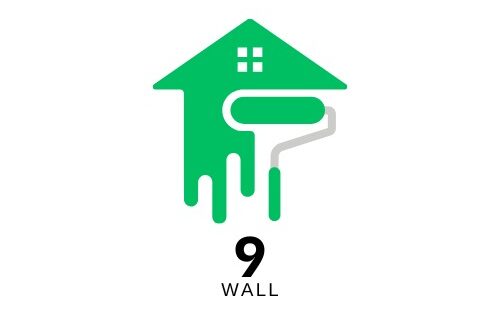Key Takeaways:
- Discover how telehealth is bridging gaps in healthcare delivery and accessibility.
- Learn about various digital tools that enhance patient experience.
- Recognize the difficulties and possible remedies within the telehealth environment.
Revolutionizing Healthcare Accessibility
The advent of telehealth solutions is a groundbreaking development in the ongoing effort to revolutionize healthcare accessibility worldwide. Historically, numerous patients have faced formidable barriers in accessing quality healthcare services, especially those in rural or underserved areas. This lack of access often resulted in delayed treatments and prolonged suffering, sometimes with dire consequences. Telehealth technology aims to dismantle these barriers by allowing instant and direct communication between patients and healthcare providers, regardless of location.
During the COVID-19 pandemic, the necessity for telehealth solutions became increasingly apparent. Healthcare systems globally were overwhelmed with patient loads, necessitating the minimization of in-person consultations to curb the virus’s spread. Telehealth emerged as a crucial tool during this period, effectively maintaining the continuity of care while promoting public health safety. As we emerge from the pandemic, the role of telehealth has become even more pronounced, setting a precedent for how modern healthcare can be delivered in a connected world.
Digital Tools Enhancing Patient Experience
The infusion of digital tools within healthcare frameworks has transformed patient experience, significantly enhancing how individuals interact with their healthcare providers. Real-time monitoring devices, user-friendly health applications, and adaptable web-based portals are revolutionizing patient care. These tools provide continuous health monitoring, reducing the need for hospital visits while ensuring that necessary interventions are promptly administered.
Patients equipped with wearable technology can monitor various health metrics, such as blood pressure, heart rate, and even blood glucose levels, with the data being shared instantaneously with their healthcare providers. This innovation enables a shift from reactive to proactive healthcare, where patients and providers can respond to health issues before they escalate into more serious conditions. Consequently, patient empowerment and engagement in health management significantly improve, allowing for more personalized and effective treatment regimens.
Telehealth in Chronic Disease Management
Managing chronic diseases, which account for many healthcare services worldwide, requires consistent monitoring and regular consultations. It often translates to frequent clinic visits in traditional settings, which can be inconvenient and labor-intensive for patients. Telehealth solutions are remarkably beneficial in alleviating these burdens. By enabling patients to consult virtually with their healthcare providers, continuous monitoring and timely interventions become more accessible and convenient.
Telehealth allows for seamless communication between patients and providers, fostering an environment where patient condition changes can be addressed swiftly. This ongoing dialogue is pivotal in preventing complications and exacerbations of chronic diseases, ultimately improving patient outcomes and quality of life. As telehealth technologies evolve, the potential for more sophisticated and tailored chronic disease management is vast, promising a more efficient and patient-centered approach to healthcare.
Psychological Benefits of Online Consultations
Telehealth is redefining the landscape of mental health services, making psychological support more accessible and less stigmatized. Often, individuals in need of mental health services face barriers such as societal stigma, anxiety about visiting a therapist, or logistical challenges. Telehealth effectively eliminates these hurdles by providing a flexible, private, and secure platform for therapy and consultations. Receiving psychological support without leaving home fosters a sense of safety and comfort, encouraging more people to seek help when needed. There is a significant uptick in the use of telehealth for mental health support, highlighting its role in transforming access to psychological services. This trend underscores a broader acceptance and utilization of virtual mental health resources in providing comprehensive care.
Economic Implications of Telehealth
The economic benefits of telehealth are far-reaching, offering substantial cost savings and efficiencies to both patients and the healthcare system. Traditional healthcare often incurs significant expenses associated with patient travel, missed work, and hospital admissions. Telehealth helps mitigate these costs by reducing the need for physical travel and optimizing healthcare resources through virtual consultations. By streamlining service delivery and reducing overheads, telehealth supports a more sustainable healthcare model that can alleviate the financial burden on healthcare systems struggling with increasing demands. More broadly, telehealth’s ability to reduce hospital admissions and shorten visit durations improves resource allocation, ultimately contributing to improved healthcare delivery without sacrificing quality.
Overcoming Challenges in Telehealth Implementation
While telehealth innovations offer numerous advantages, they face implementation challenges. Data security, for example, is a significant issue, as safeguarding sensitive health information is paramount in maintaining patient trust. Creating strong security measures is vital for adhering to regulatory requirements and protecting patient confidentiality.
Moreover, the digital divide remains a challenge, as not all patients have access to the necessary technology for telehealth services. Bridging this gap requires a collaborative effort among policymakers, healthcare providers, and technology companies to expand internet access and technological literacy. By investing in more comprehensive infrastructure and education, stakeholders can work together to ensure that telehealth is accessible and equitable for all populations.
The Future of Healthcare Delivery
The future of telehealth in healthcare looks promising, with advancements in AI and ML expected to enhance patient care further. These technologies can revolutionize healthcare delivery by improving diagnostic accuracy and enabling personalized treatment plans based on significant data insights. As AI continues evolving, its integration with telehealth platforms is poised to offer healthcare providers the tools to deliver highly effective and individualized care.
This evolution could lead to a shift from broad-spectrum treatments to more nuanced and precise healthcare solutions, optimizing patient outcomes and enhancing care delivery globally. The ongoing fusion of AI with telehealth will likely redefine our approach to diagnosis, treatment, and patient care, aligning with the industry’s push towards more tailored and data-driven healthcare practices.
Encouraging Innovation in Telehealth
Fostering innovation in telehealth is critical to ensuring its continuous development and adaptation. As the field matures, ongoing research and development will help push the boundaries of what telehealth can achieve. Healthcare technology, policy, and practice stakeholders must collaborate to drive innovation that anticipates and meets the future needs of patient care. Utilizing the combined knowledge and creativity of healthcare professionals, technology developers, and policymakers, a telehealth ecosystem can be cultivated to address current healthcare challenges and set the stage for future advancements. This collaborative effort is essential to maintaining the momentum of telehealth progress, ensuring it remains a cornerstone of modern healthcare delivery.






